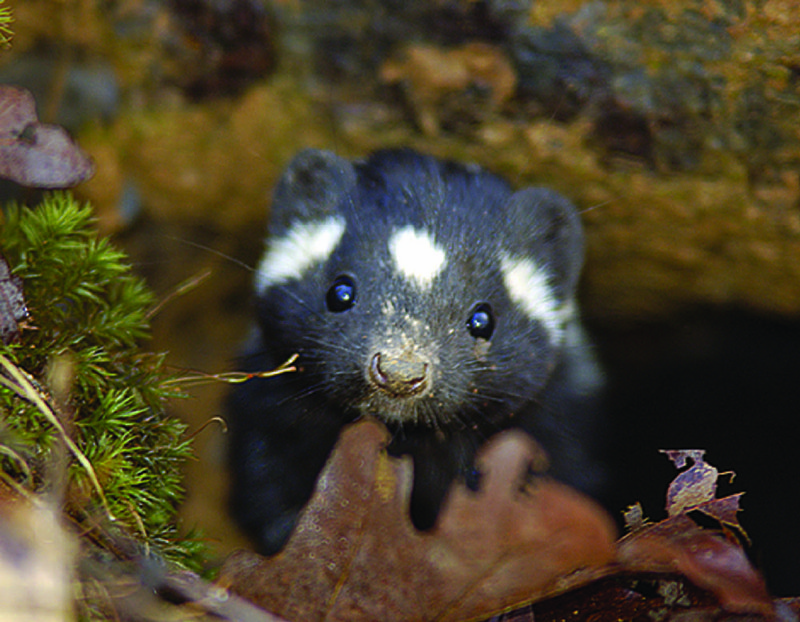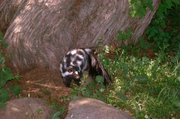Arkansans who have been sprayed by a spotted skunk should count themselves very lucky, because it doesn't happen every day. Or month. Or year.
When it does it's ... well. Being sprayed by a common striped skunk is always memorable, but spotted skunks are rare. And a little odd.
"The neatest thing about the spotted skunk, when they're getting ready to spray something, they'll do a little handstand, as kind of a warning," says Blake Sasse, who is the Arkansas Game and Fish Commission's go-to guy for skunks and other nongame mammals.
"I'm not lying to you," he
adds, "you can look it up on YouTube."
The striped skunk, while also a YouTube star, doesn't do handstands. About the size of a cat, the striped skunk is also much larger than the squirrel-size spotted skunk.
Spotted skunks are black and white, but although they may have one blob on their heads, typically they aren't covered in spots. Instead they have multiple bars or swirled stripes.
The spotted skunk is also much harder to find. In fact, wildlife experts don't know where spotted skunks are.
That's why Sasse is asking Arkansans to help him conduct the Arkansas Spotted Skunk Survey, a citizen-science project to learn where the little stinkers live in the state.
"The spotted sunk is an animal which has gotten really rare in the United States," Sasse says. "It's one we don't know much about. It used to be very common, up until about the '40s, but its populations seem to have crashed across a lot of the upper Midwest. It's been proposed for listing as an endangered species.
"I've been asking members of the public to use their own game cameras, following some guidelines on how I would like to have them set up and baited."
The idea is that properly baited game cameras set up on private land all over the state will attract any spotted skunks living nearby and snap photographic evidence that they exist. That can help the commission to map the species' range in Arkansas.
The next step would be "to try to catch them and put radio transmitters on them to see what kind of habitat they actually like," Sasse says. In 2006, the commission participated in a radio-collar research project on spotted skunks in the western Ouachita Mountains.
"From working with trappers who have caught them over the years, we know they still seem to be found mostly in the Ouachitas and the Ozarks, but back in the '40s they were more common in south Arkansas and even in parts of the Mississippi Delta. We're trying to find out if they're still out in those areas."
Little is known about the animals because "they weren't a major nuisance animal. They weren't a major furbearing animal that has really valuable pelts. So they weren't on anyone's radar screen," Sasse says, "and now we're finding out that their range has contracted and they're really hard to find in a couple of states where they used to be common."
Why should anyone care that a whole category of little skunks might be dying out? They're ... skunks.
"These guys, skunks in general, they do a lot of good for us," Sasse says. "Their main diet is mice, and in the summer they're eating insects and grubs."
Skunks also help limit the population of rabbits and other rapidly reproducing small mammals by eating them.
Survey participants will get directions on how to place their cameras and what bait to use to attract spotted skunks to the camera site. They will leave the camera out for at least 21 nights, downloading photos once a week.
Participants must:
• request an application form and complete the form after it arrives.
• obtain landowner's permission to place game cameras.
• set up at least one game camera and collect geographic coordinates (GPS) of the site.
• bait and monitor the site
The link to request survey participation is at survey.agfc.com.
ActiveStyle on 01/09/2017

